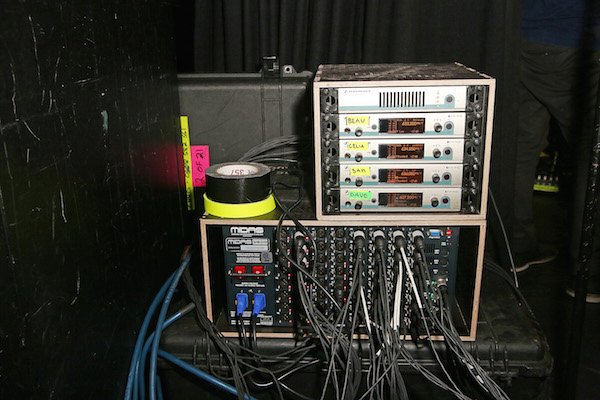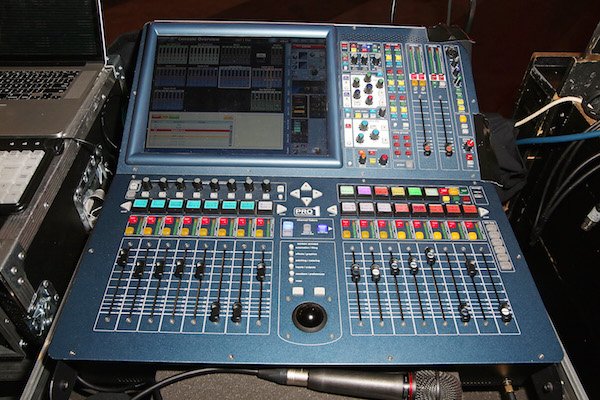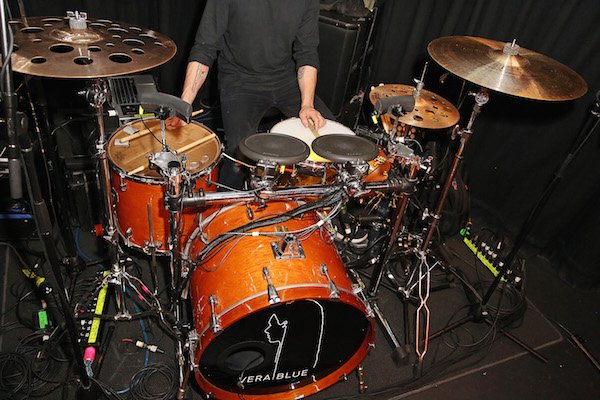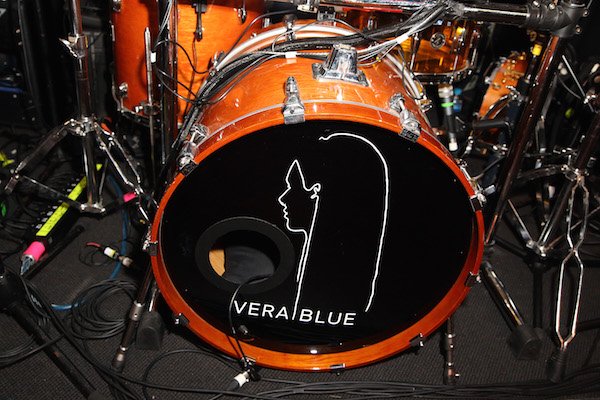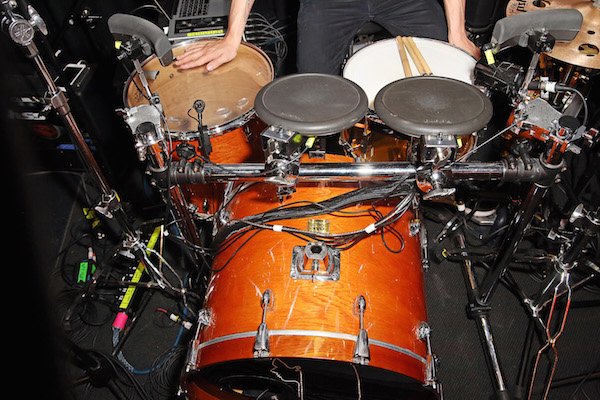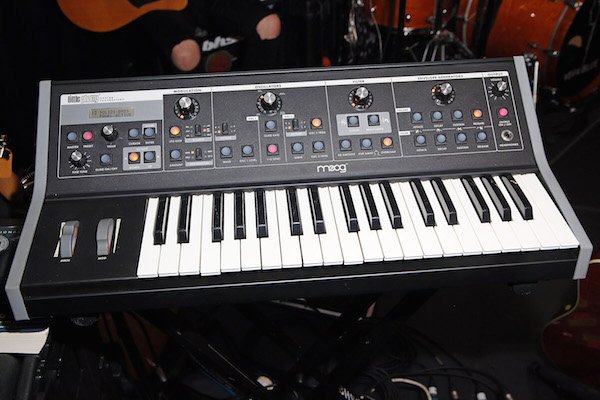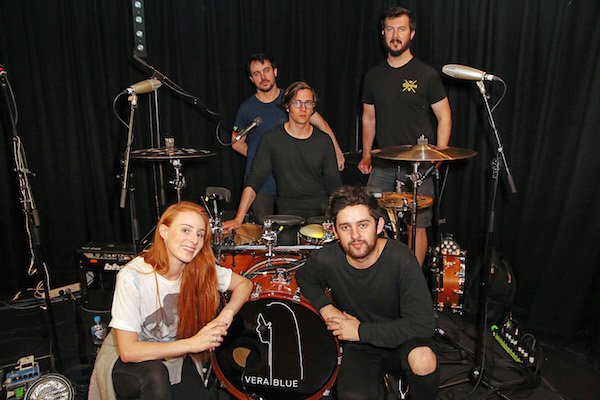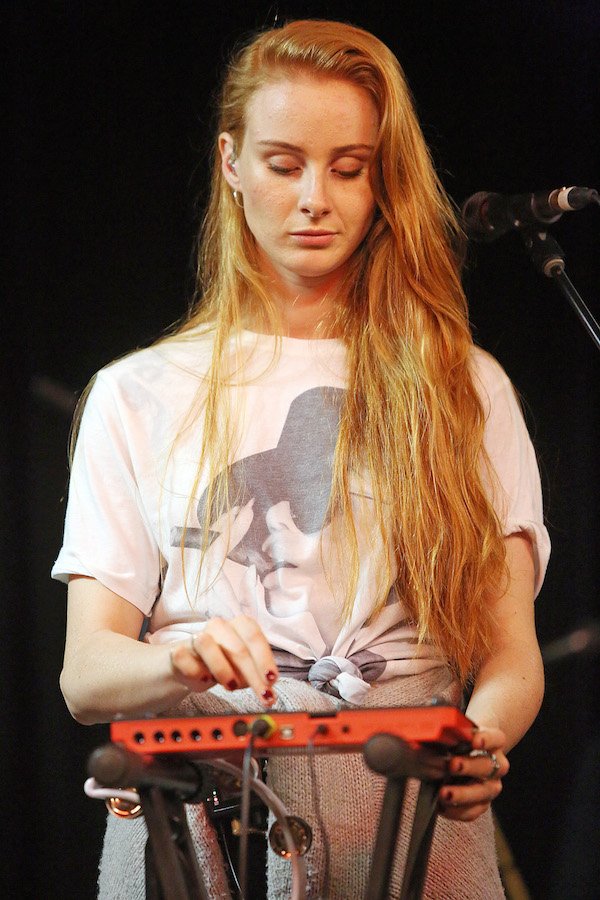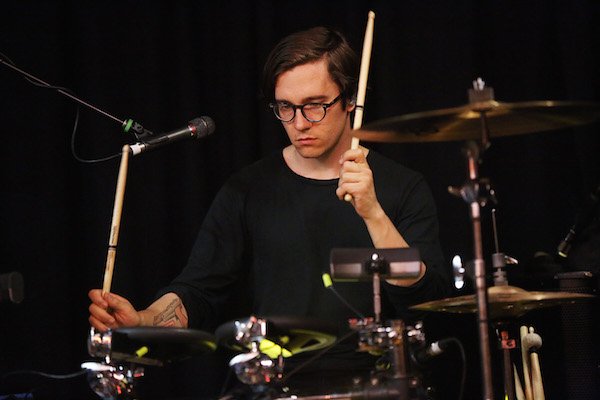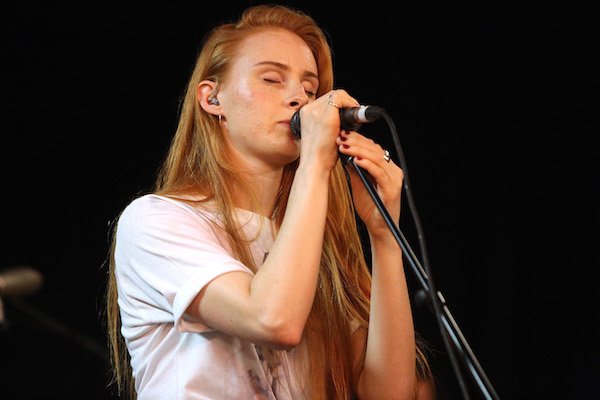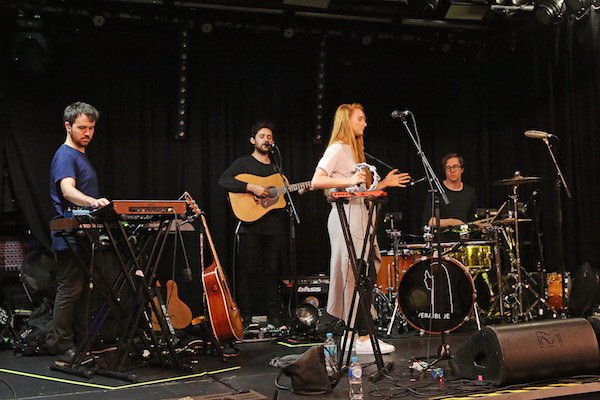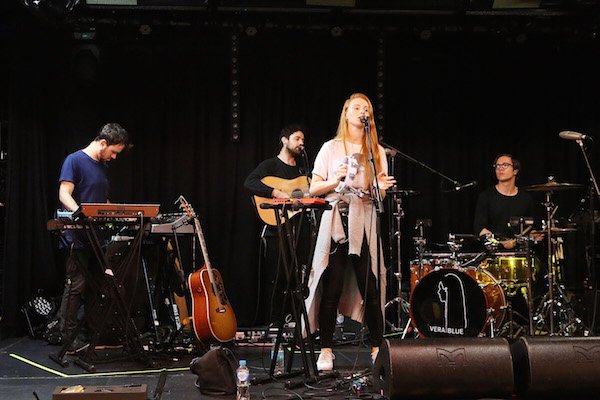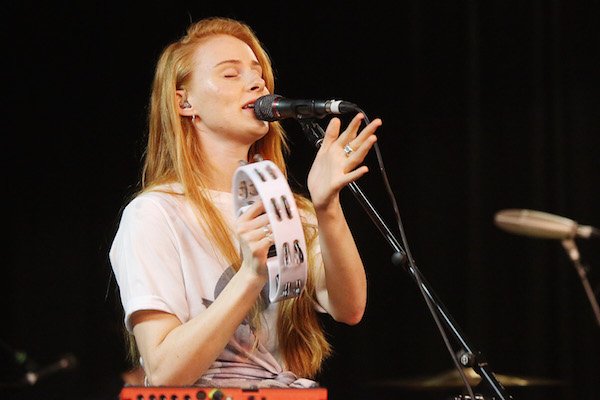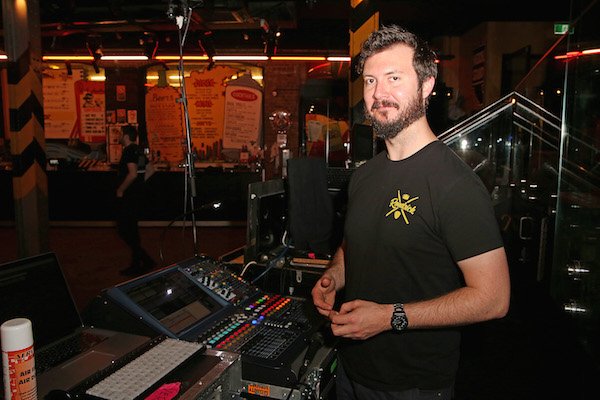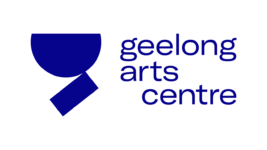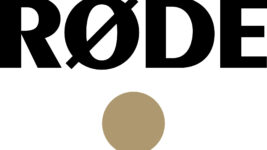News
4 Oct 2016
SOUNDCHECK: Vera Blue
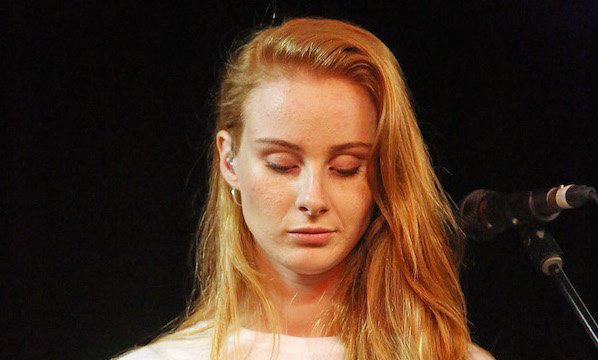
Subscribe to CX E-News
By Cat Strom
When FOH engineer Chris Braun received an email from Aussie singer-songwriter Vera Blue’s management expressing interest in him mixing for her, he had no idea who she was.\
“I did my usual background check: iTunes, Spotify and YouTube,” he said. “The record was stunning and her voice is obviously next level however, I had heard amazing vocals on record before that don’t translate live. I then found the Triple J ‘Like A Version” where artists don’t get very many takes and there isn’t any heavy editing going on, it’s nice and raw and can really show up any weaknesses in things like vocals.
“I checked out the cover of Breathe Life by Jack Garratt and it was a killer, I then listened to her performance of her own song Hold which gave me the comparison between the recordings and live and, well …… her voice is even BETTER live! It took me all of 10 seconds to make my decision and I replied to management with a simple ‘I’m in’.”
Before this tour, Vera Blue (real name Celia Pavey) did a small support run with Broods which was a three piece set up without live drums. After that, there was a makeup show for a Matt Corby gig in Sydney at the Enmore, then it was tour time.
The tour visited all of the major cities plus Darwin and Tasmania with a string of sold out performances.
“It’s been super fun,” commented Chris. “When you’re working with a voice like Celia’s, backed by a band under the watchful eye of someone of the caliber of MD/ drummer Dave Jenkins Jnr, your life really becomes pretty easy. We’ve just finished a couple nights in Sydney at the Oxford Arts Factory and the shows were just stunning. I see this show several times a week and even I was like ‘what the douche?’ I’ve seen tears in eyes, I’ve seen smiles, I’ve seen people just looking at the stage not knowing what to do ….. it’s a real pleasure for everyone involved whether you’re on stage, behind a console or in the audience.”
After the initial chat with management and Celia about the previous tour, it was obvious that consistency and monitoring were the main concerns moving forward. With this in mind, Chris put together a FOH control package from his own company Bloc Audio.
The control package included a MIDAS Pro1 with a DL251 48 x 16 io rack with monitoring taken care of by Sennheiser G3 IEM units. A full microphone and DI package plus stage drop patch system and multitrack solution were also toured. With this package, Chris can have the console in, core run, io and monitoring up and running inside of half an hour from arrival.
“The show had a total of 34 inputs from stage, four stereo sends of IEM’s as well as drum sub and sidefill sends to give the guys a bit of vibe on stage,” added Chris. “We toured this package for the entire run and took it into a couple of festival appearances. In these situations, I still run all the IEM’s and stage mixes from FOH. Everything was so dialed in and the respective production managers were that helpful, it allowed me to confidently run things from out front with enough time on the bump in to ensure everything was air tight.
“I gave the festival monitor engineer a pack so he could listen in which also meant he heard what the band hear. If something goes wrong, they are there and have heard it and we can be in instant communication with each other.”
According to Chris, touring this package allowed the band to simply play and feel 100% confident on stage. The difference for the band was that they were no longer thinking about anything other than playing, Chris is there 100% of the way with them and they knew that support was only a glance away.
“Touring all our own mics, DI’s, console and IEM’s meant our level of consistency was the best possible,” he remarked. “Soundchecks were super quick and easy on a daily basis. Out front, I obviously tuned PA to sound the same as possible each night. I used tools available within the MIDAS Pro1 to achieve this, which meant there were very little – if any – changes to be made on the inputs and that rolled down stream to the band resulting in the same IEM mixes each night.”
Chris also toured a multitrack solution which allowed him to fully record each show for any potential use later. This also allowed him to do virtual sound checks where necessary like early mornings at festivals before the gates opened.
“It’s also allowed me to refine things,” he said. “On day one of rehearsals I let the band figure the show out, what they were playing, arrangements etc. with some rough IEM mixes in an attempt to stay out of their way while still allowing them to do their thing.
“Towards the end of the day, I hit record and we ran through the set. I sent the band home and hung around into the night and dialed in sounds, effects and most importantly, their IEM mixes so we had a solid foundation to start on for day two. The team came in the next morning and within about 10 minutes of playing, we’d made all the tweaks required of the IEM mixes and haven’t really made many changes through the tour at all.”
Bloc Audio has recently started a new relationship with JH Audio IEM’s and have put Celia on a set of custom JH16 Pro’s (with blue sparkle!) and drummer Dave is also on a set of JH13 v2 Pro’s (with silver sparkle) which is a significant improvement from the generic, albeit top quality, IEM’s they were using prior.
“We started the tour on the Shure 535’s with great results but Celia’s ear canals are simply too small for any of the ear pieces available and while she was very happy with how it was all sounding, she was finding it a little uncomfortable from time to time,” explained Chris. “Working with Sue at JH Audio, who is extremely accommodating, we were able to get Celia fitted and her IEM’s turned around super quickly which meant it wasn’t long before we made the switch.”
Chris commented that making the change during soundcheck when the moulds arrived was a cool experience.
“We started the check on the Shure 535’s and switched over to the JH16 Pro’s so Celia could get a direct comparison. Her face lit up with the difference, the added depth and stereo image made her experience that much better and I hadn’t even changed anything! Add to that the comfort factor and I had one pretty happy boss on my hands.
“As we worked through the soundcheck, we made small adjustments to her mix to accommodate the new monitors. The biggest thing Celia noticed when wearing the moulded ears was the amount of extra mechanical volume she could hear from herself. Her inner ear was revealing things she hadn’t really heard before, the sound of her own voice traveling up her jaw bone and into her inner ear became extremely obvious when coupled with the added monitoring of her vocal through the IEM’s.
“This was a little bit of a challenge because it’s something only Celia can hear, I can’t cue up her mix and hear the effect of her mechanical sound and how it interacts with her inner ear. Given it was a new sound for her; Celia had a bit of trouble expressing exactly what it was that she was hearing. A slight EQ filter sorted the issue and the smile was back again but as an audio nerd, it was pretty cool to put that theory into practice.”
Celia’s vocal is one that you can simply turn up and go although Chris used the MIDAS dynamic EQ to control certain ranges of her vocal, given the dynamic nature of the show. When she really goes for it, 5k can jump out a little so the dynamic EQ engages at that point. Chris also controlled some low mid energy – a couple of dB at most every now and then. From there, he might add a small filter here or there depending on how the room goes when it’s full post soundcheck but otherwise, the EQ is flat.
“There was some light compression going on as well, just a 2:1 ratio across her FOH vocal channel,” Chris said. “Celia’s vocal control is among the best I have worked with so I don’t need to be ‘controlling’ her, she does that herself. If Celia’s vocal jumps up, it’s because she wants it to, the compression is pretty much there to just keep a handle on things so there are no major surprises.
“There were plenty of effects cues, some obvious and others not so much, but it all goes together with what the band are doing to create what I can only describe as a sheer wall of sound in several moments of the set.”
Chris was not using any third party plug-ins on this run although he had thought about it and even had it set up ready for rehearsals. However, it became apparent pretty quickly that he just didn’t need to “fix” things or control them. He had one or two things going on in the MIDAS effects rack for verb and the dynamic EQ but other than that, it was a pretty pure signal path from stage to listener.
One thing that Chris created and managed at FOH was the sub content. Beau played all the bass information via a Moog while playing all the other synth’s as well – but the real ankle rattling, big ‘warm hug’ stuff came from Chris’ end.
“Beau and I worked pretty closely to achieve this and the results were BIG!” declared Chris. “On the drums there is just a short verb and some parallel compression, pretty standard stuff. I’m not a big fan of long reverb tails in the live world unless it’s an actual effect like snare bomb or something. I find long verbs linger around too long and muddy the image but what I do like is the space, so there is a big, yet short verb on Celia’s vocal. I also have a very short slap delay that I use in different parts of the show, sometimes barely noticeable; sometimes it’s right out there. I find the space it gives, along with the short verb, produces a really interesting space while still remaining clean and not getting in the way of the vocal itself.”
Chris started Bloc Audio with his good mate David Cuthbertson (who owns his own production company and is a seriously switched on acoustician) and they specialize in custom control, monitoring, recording and communication packages for fly date tours. Everything they do is based around the 23kg and 32kg limit for flying which means the entire audio control, monitoring, patch, recording, mic and DI package that they’re touring with Vera Blue all fits on a plane with no issues.
“Everything we do is milspec, from connectors to cable infrastructure, everything is packaged properly with no corners cut,” Chris added. “The foam, casing, weight, reliability and service have all been considered. The idea is that everyone should have access to the best gear and be able to achieve the kind of results we have on the Vera Blue tour without breaking the bank. Each of our packages are designed and modified around the needs of any given tour. This can mean different packaging, wiring, MIDAS or DiGiCo consoles, Sennheiser or Shure IEM’s, Motorola radios for crew ..… whatever a tour needs.”
Hybrid drum rig
Dave Jenkins Jnr has one of the most interesting and versatile set-ups in drum world that Chris has ever worked with. Given the nature of the Vera Blue material and the range from acoustic to electronic music, he’s built a kit that allows him to take full advantage of both styles.
The drum kit setup is a hybrid rig comprised of Yamaha oak custom shells, an acrylic snare (made by local Sydney company Blackbird Drums), a Gibraltar rack with Roland PD8 & BT1 triggers, KT-10 kick pedal trigger, and an RT-30k kick trigger on the acoustic kick. This all runs into a ROLAND TMC-6 trigger to midi converter before hitting the Ableton rig where all the samples are triggered from drum racks in the master session.
“In the past I have used an SPD-SX pad as the base of my operations, but this time around I wanted to build something from the ground up and not be inhibited by the restrictions I had run into in the past, said Dave. “Running the drum triggers out of Ableton has really streamlined the whole set building process for me. Changing sounds or layering sub samples is as easy as dragging and dropping and can be done during soundcheck and even during songs if necessary.”
As well as the drum triggers, certain backing track elements are also run out of Ableton. While the majority of parts are played by the band, there are a few elements that have been left on track to retain the impact of the original recordings. Things like harp lines, percussion loops and FX are all being sent from the Ableton rig, as well as a click for drums and a click for the rest of the band. (The two clicks are necessary to cueing different members at different times).
Front of the stage, is an Akai MPX16 which has become quite a feature in the Vera Blue set, and something that Celia has really taken to. This small touch pad is armed with 16 velocity pads which are midi synced back to an Ableton drum rack loaded up with vocal samples and synth sounds that have been taken from the original recordings.
Over in keyboard land there are also some midi elements hiding away alongside Beau’s already impressive setup; Moog Little Phatty, Dave Smith Mopho x4 and Korg Minilogue. Beau’s Mopho x4 has been setup with a midi out signal being sent back to the Ableton rig. This means he can trigger soft synths and access sounds that are not specific to that keyboard (like a piano sound). He can also blend it with the Mopho’s onboard sounds to create thick analogue stacks underneath the Ableton sounds.
The playback rig consists of a MOTU ultralite mk3 (running 10 audio outs), MOTU microlite midi interface, Radial PRO8 rack DI, and a supped up MacBook Pro.
Subscribe
Published monthly since 1991, our famous AV industry magazine is free for download or pay for print. Subscribers also receive CX News, our free weekly email with the latest industry news and jobs.

